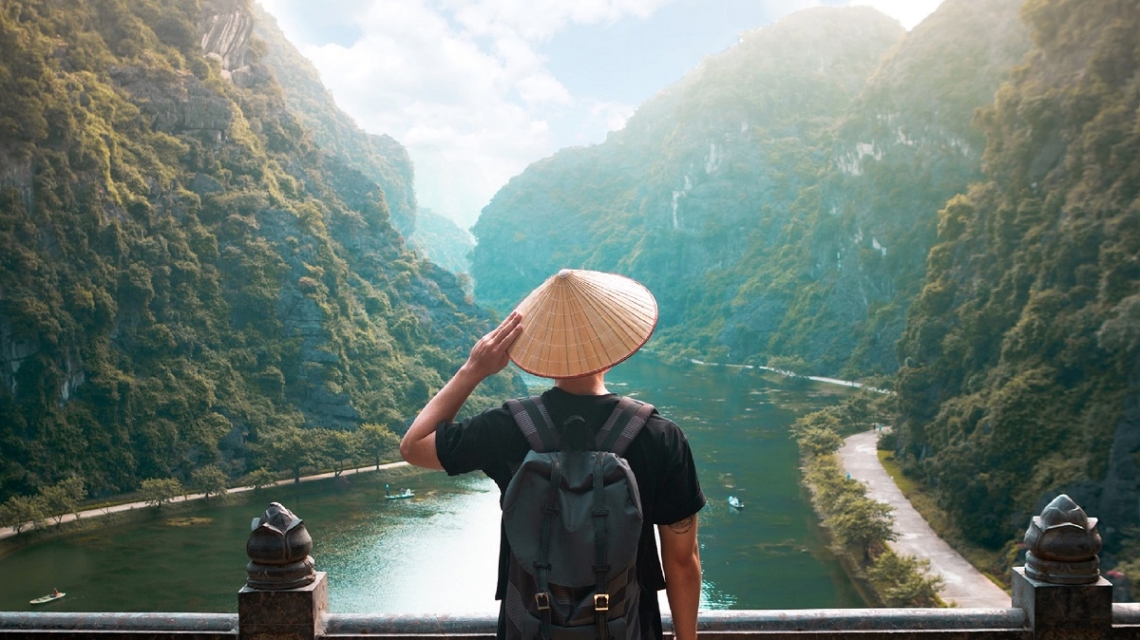
Unique Seasons of Vietnam: Where to Go and What to Do
Are you planning a vacation to Vietnam? Vietnam is a diverse, vibrant country in Southeast Asia, offering a wealth of captivating experiences throughout the year. From the bustling streets of Hanoi to the tranquil waters of Ha Long Bay, this enchanting destination has something to offer every traveler. You might be wondering: When is the best time to visit Vietnam?
The answer is it depends on where you’re going! Due to its geographical location, you will experience different seasons in Vietnam depending on where you are. Here’s a guide detailing the weather and seasons of Vietnam to help you on your trip, so you can decide which place to visit, what to wear, and what activities you can do.
For this guide, we will separate the country into regions: North Vietnam, Central Vietnam, and Southern Vietnam.
Contents
Northern Vietnam
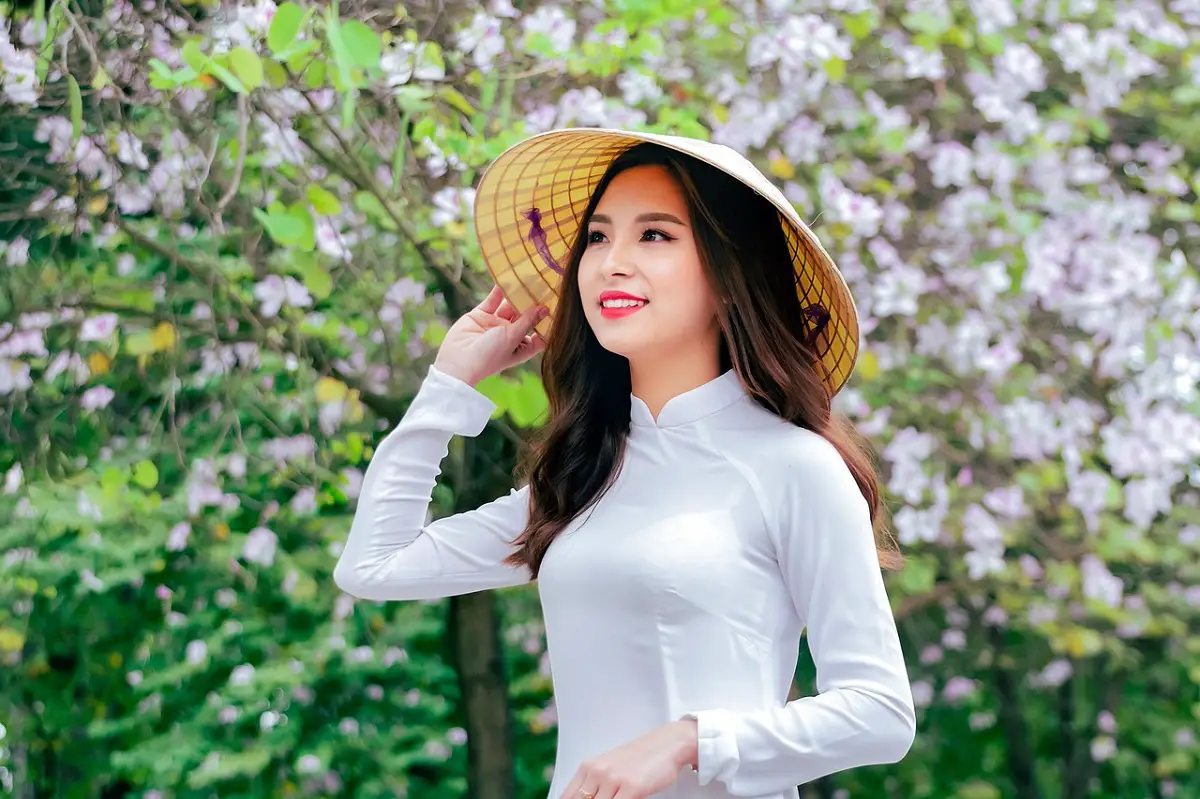
Northern Vietnam covers the capital city of Hanoi, as well as the UNESCO World Heritage Site of Halong Bay, Ninh Binh, and Mai Chau. The mountainous areas of Sapa, Ha Giang, Bac Ha, and Mu Cang Chai are also located in this region.
Northern Vietnam has four distinct seasons: spring, summer, autumn, and winter.
Spring (March to April)
Spring is a mild season with pleasant temperatures. If you are arranging an iVisa to the northern region of Vietnam during this time, expect occasional rain showers and a burst of colors all around!
It is an excellent time to visit the capital city of Hanoi and its surrounding areas. Stroll around Hoan Kiem Lake, witness the pink blossoms of peach trees in the Temple of Literature, and explore the narrow streets of the Old Quarter. You can also embark on a bike tour through the countryside, where you can enjoy the picturesque backdrops created by vibrant fields of flowers.
Another must-visit destination is Sapa, nestled in the stunning Northern Vietnamese mountains. This region is famous for its terraced rice fields, which transform into a sea of emerald green during the spring season. Immerse yourself in the local culture by joining a homestay with ethnic minority communities, trekking through the mountains, and attending traditional festivals.
Summer (May to August)
Summers in the north are hot and humid. Prepare comfortable summer clothing, as temperatures can reach highs of 35°C (95°F) or more, accompanied by occasional rain showers and thunderstorms.
Autumn (September to November)
Autumn is considered the most beautiful season in Northern Vietnam. The weather is mild and there is low humidity. Landscapes transform into vibrant shades of yellow and orange.
This is a great time to see the autumnal colors of the countryside and mountainous regions, such as Sapa, Ha Giang, and Mai Chau. The vibrant colors of autumn leaves create a picturesque and romantic setting that’s enticing not just to casual tourists, but nature enthusiasts and photographers as well.
Winter (December to February)
While snow is a rare occurrence in Vietnam, the winters can be chilly especially in mountainous areas. Temperatures range from 10°C to 20°C (50°F to 68°F), and fog and drizzle are common especially in the mornings and evenings.
There are still plenty of activities to do during winter. In fact, it’s a popular time for trekking and exploring the mountain scenery, since you can expect stunning winter landscapes, with mist-shrouded valleys, terraced rice fields, and snow-capped peaks in some higher elevations. It’s also a great time to explore savory dishes including banh cuon (steamed rice rolls), bun thang (noodle soup), and cha ca (grilled fish) and winter snacks like roasted chestnuts.
You can also experience one of the most famous celebrations in the country — the Lunar New Year, also known as Tet. Partake in Tet customs, witness traditional lion dances and firecracker displays, and explore the local markets.
Central Vietnam
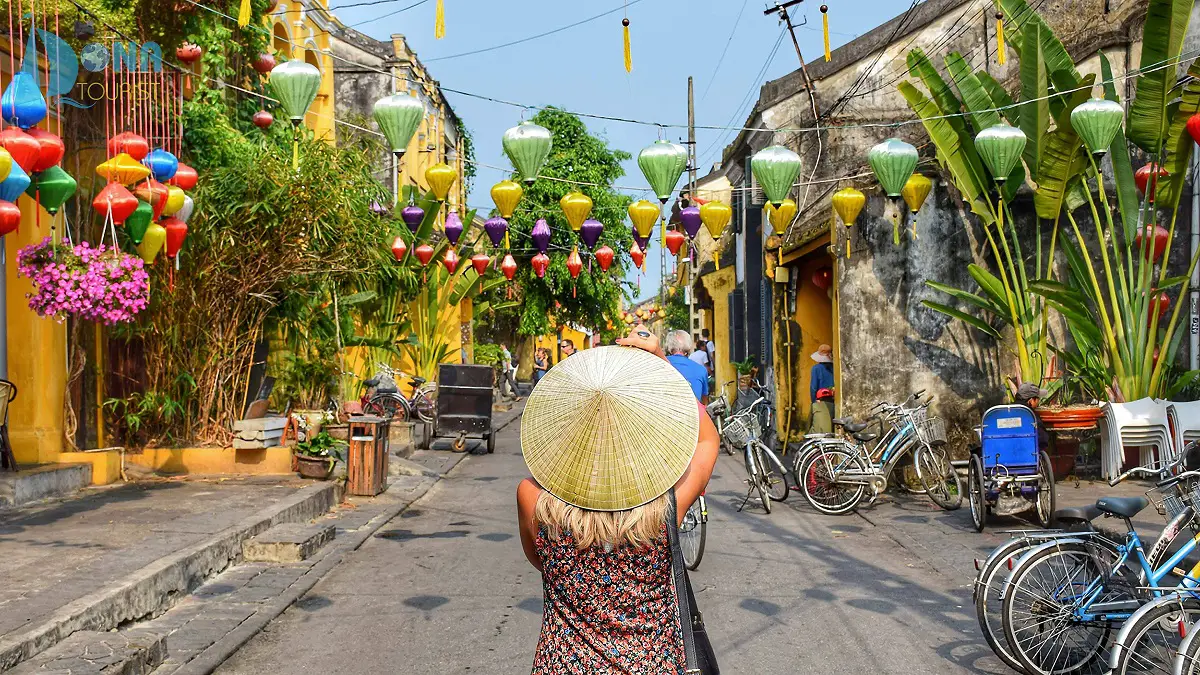
Central Vietnam covers the famous UNESCO World Heritage Site of Hoi An, Danang, Hue, Nha Trang, and the less-visited Quy Nhon.
This experiences a tropical climate, and its weather is influenced by two distinct monsoon seasons: dry season and rainy season. Its weather is similar to Southern Vietnam, although the southern area experiences more rains.
Dry season (January/February to August)
In the North Central Vietnam (which includes Hue and Dong Hoi), the dry season runs from February to August. While in the South Central Vietnam (which includes cities like Da Nang and Nha Trang), it runs from January to August.
There are plenty of things you can do during the dry season in Central Vietnam. This region is known for its stunning coastline and beautiful beaches, so plan your trip in the coastal cities of Da Nang, Hoi An, and Nha Trang. Soak up the sun, go swimming and snorkeling, and indulge in various watersports such as kayaking, surfing, and jetski.
You can also explore great outdoor destinations. Phong Nha-Ke Bang National Park is known for its impressive cave systems, lush jungles, and picturesque karst mountains. Or discover the beauty of Bach Ma National Park and the nearby Hai Van Pass.
Rainy season (September to December/January)
In the North Central Vietnam, the rainy or wet season runs from September to January. While in the South Central Vietnam, it runs from September to December.
One thing that you should know is that Central Vietnam is prone to typhoons and tropical storms, particularly in the months of September and October. Although the rainy season is shoulder season and you may take advantage of lower rates overall, the weather events can bring heavy rainfall and strong winds which can disrupt your travels. So take this in mind!
That saying, you will still find activities to do during rainy season in Central Vietnam. Enjoy a rainy staycation in city hotels and visit indoor attractions such as museums, art galleries, and historical sites like the Imperial City in Hue or the Cham Museum in Da Nang. Go cafe hopping and try out the local coffee specialties in Vietnam. Join traditional craft workshops such as pottery making, lantern making, or silk weaving in Hoi An. Or book a cooking class!
Southern Vietnam
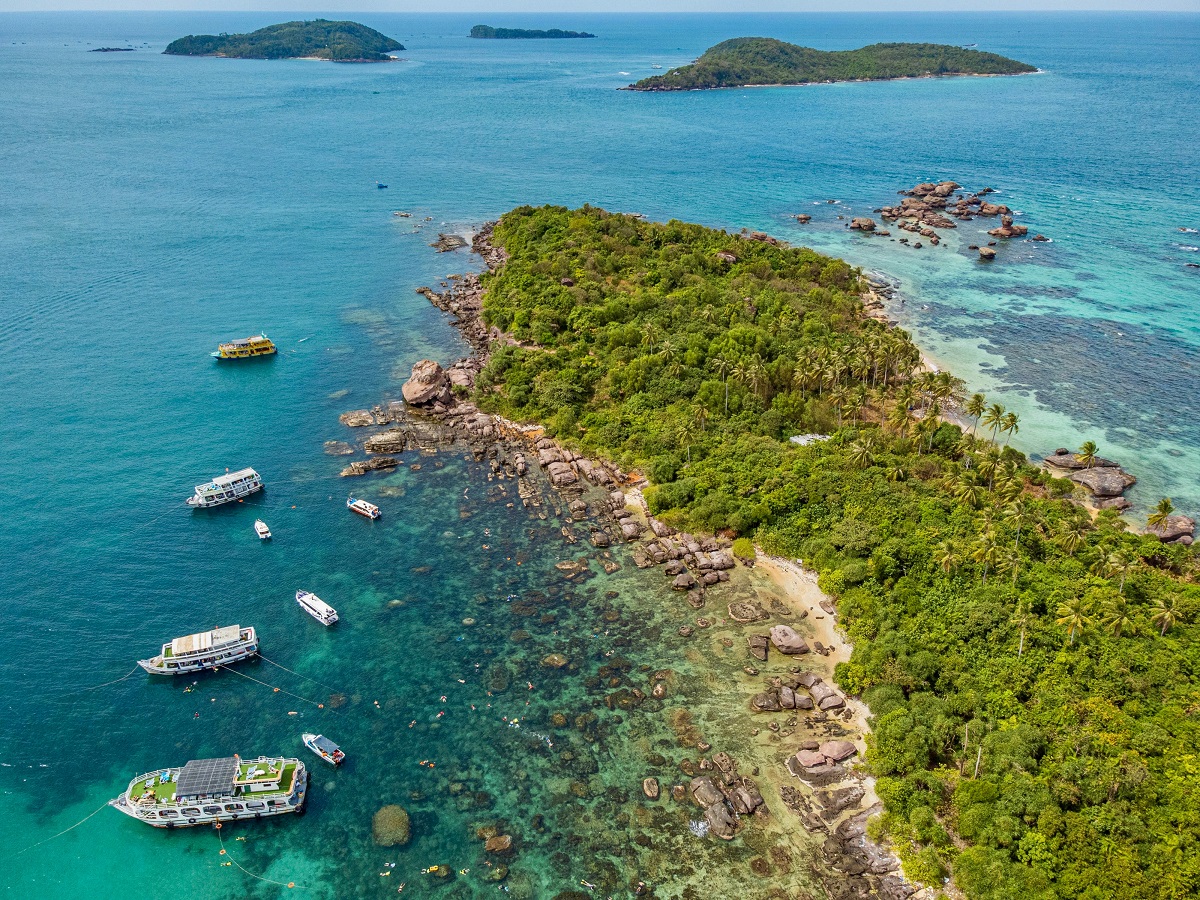
The most popular destinations in Southern Vietnam are Ho Chi Minh City (formerly known as Saigon), Mekong Delta, and Phu Quoc Island.
Similar to Central Vietnam, the weather is divided into the dry season and rainy season. Weather can vary slightly depending on the location. Specifically, coastal areas may experience more humidity and rainfall compared to inland regions.
Dry Season (December to April)
The weather from December to February is generally cooler and less humid compared to the rest of the year. It’s a fantastic time to visit Southern Vietnam due to the pleasant weather. March and April can be hot and humid, with the average temperature ranging from 28°C to 34°C (82°F to 93°F).
For a unique summer experience in Vietnam, head to Phu Quoc Island in the Gulf of Thailand. This tropical paradise boasts palm-fringed beaches, lush jungles, and vibrant coral reefs. Explore the island’s national parks, go snorkeling or scuba diving to witness the underwater wonders, or simply unwind in one of the luxurious beach resorts.
Rainy Season (May to November)
The month of May marks the onset or the rainy season, with increased rainfall and higher humidity which continues up to August. Rain showers and thunderstorms are common and usually occur in the afternoon or evening. The peak of the rainy season is from September to November, with frequent rainfall and occasional typhoons. Again, while you can do various indoor activities during this time, any outdoor activities can be affected by the weather.
Year-round activities in Vietnam
While the different seasons of Vietnam have their own unique charm, there are activities that you can do year-round.
For food enthusiasts, you can embark on a culinary adventure any time of the year to explore the diverse flavors and regional specialties of the country. Indulge in a bowl of pho, savor the iconic banh mi, or try the mouth-watering cao lau in Hoi An. Take a cooking class and learn the art of Vietnamese cuisine from local chefs, discovering the secrets behind signature dishes like bun cha and spring rolls.
Nature lovers will find solace in Vietnam’s national parks and natural wonders. From the breathtaking caves of Phong Nha-Ke Bang National Park to the picturesque landscapes of the Mekong Delta, there is an abundance of natural beauty to explore. Take a boat trip along the Mekong River, cruise through the stunning limestone formations of Ha Long Bay, or hike through the lush jungles of Cat Tien National Park, home to a rich variety of flora and fauna.
For history buffs, Vietnam has a rich cultural heritage, offering a glimpse into its past. Visit the ancient capital of Hue, where you can learn the story of the Nguyen Dynasty through the imposing Imperial Citadel and royal tombs. Or explore the Cu Chi Tunnels near Ho Chi Minh City, a network of underground tunnels used during the Vietnam War.
Annual festivities in Vietnam
You might want to schedule your trip during a local festival, so you can partake in celebrations and experience its local culture. Here are the top festivals in Vietnam:
Tet Nguyen Dan (Lunar New Year)
Tet is the most important — and widely celebrated — festival in Vietnam. It celebrates the arrival of the Lunar New Year, which falls between the last week of January and the third week of February. Hanoi and Ho Chi Minh City are excellent places to experience Tet Festival, where you can visit temples, enjoy special food, and see colorful decorations, lion dance performances, and fireworks.
Hue Festival
Held in the former imperial capital of Hue, this 6-day festival is held every two years, from the months of April to May. The festival highlights the city’s royal history and is a fantastic opportunity to explore the city’s historical sites, such as the Imperial Citadel, royal tombs, and historic pagodas. You can also sample mouth-watering Hue cuisine and witness traditional music, dance performances, and captivating parades.
Mid-Autumn Festival
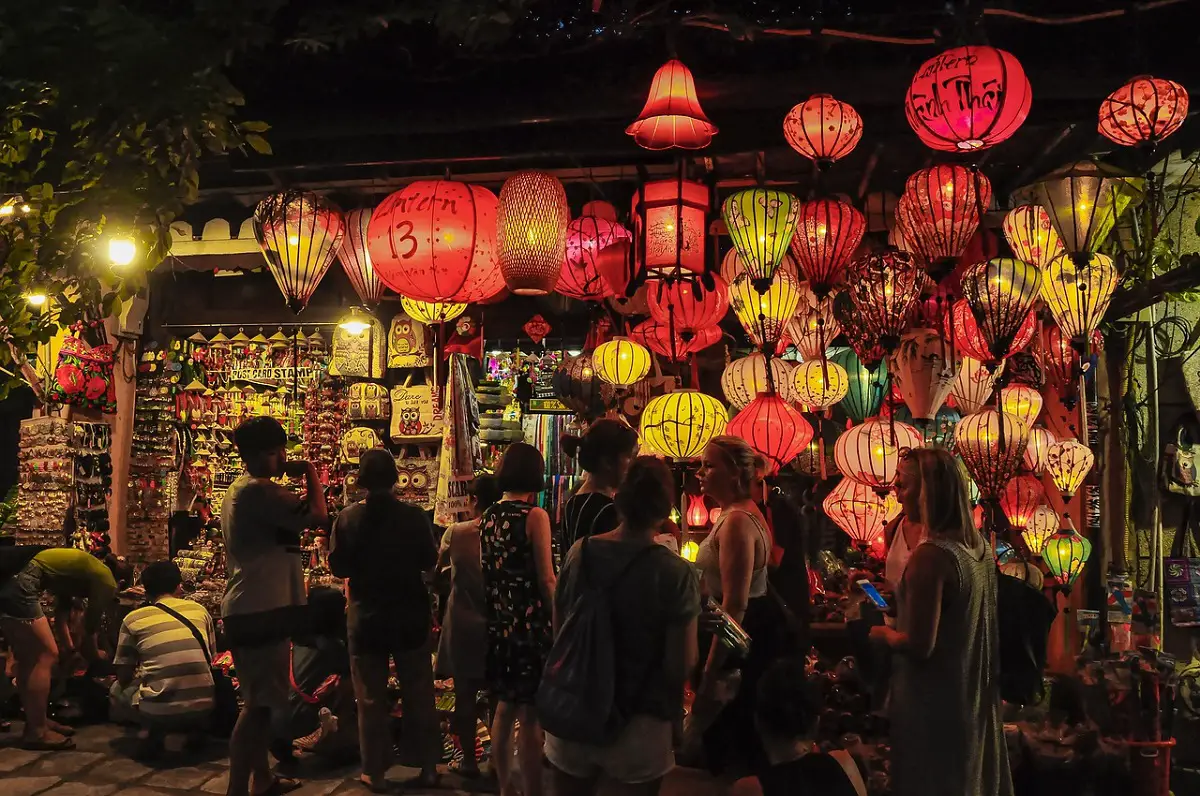
Celebrated on the 15th day of the eighth lunar month, the Mid-Autumn Festival is a joyous event for children and families. Ho Chi Minh City’s District 5 and Hanoi’s Old Quarter are lively places to join in the celebrations, with street performances, lantern displays, and a festive atmosphere. Marvel at the colorful lantern displays, join the traditional lion dances, and savor the delicious mooncakes that are a hallmark of this celebration.
The different seasons of Vietnam offer a huge range of local activities in each location. Whether you are seeking natural wonders, cultural experiences, or simply a chance to relax on pristine beaches, Vietnam has it all.
This article is contributed by an expert guest author.



